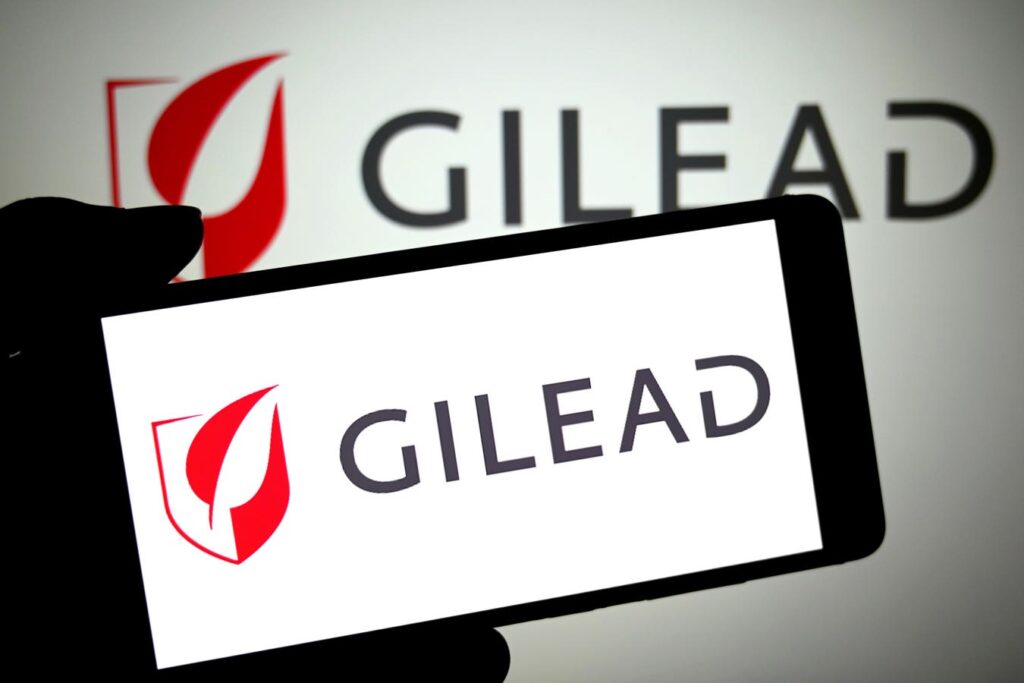Despite a recent setback with an FDA clinical hold on its HIV treatment trials (GS-1720 and GS-4182) due to a decrease in CD4+ T-cells, Gilead Sciences (NASDAQ:GILD) has demonstrated a strong performance this year, with its stock up 18% compared to the S&P 500’s modest 2% gain. The company is actively collaborating with authorities to resolve the recent issues and remains focused on improving profitability.
Gilead boasts a robust pipeline with 16 programs in late-stage clinical trials. Its current valuation, around $110 per share, appears moderate, suggesting potential for further growth. Our comprehensive analysis, evaluating Gilead Sciences across key parameters of Growth, Profitability, Financial Stability, and Downturn Resilience, indicates a strong overall operating performance and financial condition. That said, if you seek upside with lower volatility than individual stocks, the Trefis High Quality portfolio presents an alternative – having outperformed the S&P 500 and generated returns exceeding 91% since its inception. On a separate note, see – SoundHound AI: Buy, Sell Or Hold SOUN Stock At $10?
Valuation: How Does Gilead Stock Stack Up Against the S&P 500?
When comparing valuation metrics based on sales and profit, GILD stock currently appears slightly undervalued compared to the broader market:
- Price-to-Sales (P/S) Ratio: Gilead Sciences has a P/S ratio of 4.8, while the S&P 500 stands at 3.1.
- Price-to-Free Cash Flow (P/FCF) Ratio: Gilead’s P/FCF ratio is 14.0, significantly lower than the S&P 500’s 20.9.
- Price-to-Earnings (P/E) Ratio: Gilead’s P/E ratio is 23.2, compared to the benchmark’s 26.9.
Revenue Growth: A Look at Recent Trends
Gilead Sciences’ revenues have experienced marginal growth in recent years:
- Over the last three years, Gilead’s top line has grown at an average rate of 1.5%, compared to 5.5% for the S&P 500.
- In the last 12 months, revenues grew 4.7% from $27 billion to $29 billion, slightly below the S&P 500’s growth of 5.5%.
- Most recently, quarterly revenues shrank 0.3% to $6.7 billion from $6.7 billion a year ago, while the S&P 500 saw a 4.8% improvement.
Profitability: A Key Strength
Gilead Sciences demonstrates significantly higher profit margins than most companies in the Trefis coverage universe:
- Operating Margin: Gilead’s operating income over the last four quarters was $11 billion, representing a considerably high operating margin of 37.4%.
- Operating Cash Flow (OCF) Margin: Gilead’s OCF over the same period was $10 billion, indicating a high OCF margin of 36.1% (versus 14.9% for the S&P 500).
- Net Income Margin: Gilead’s net income for the last four quarters was $6.0 billion, resulting in a high net income margin of 20.8% (compared to 11.6% for the S&P 500).
Financial Stability: A Strong Balance Sheet
Gilead Sciences’ balance sheet appears strong:
- Debt-to-Equity Ratio: As of the most recent quarter, Gilead’s debt stood at $25 billion, with a market capitalization of $135 billion (as of June 17, 2025). This translates to a moderate Debt-to-Equity Ratio of 18.1% (compared to 19.4% for the S&P 500), which is a desirable indicator.
- Cash-to-Assets Ratio: Cash and cash equivalents make up $7.9 billion of Gilead’s total assets of $56 billion, yielding a strong Cash-to-Assets Ratio of 14.0%.
Downturn Resilience: Gilead Stock’s Performance During Market Crashes
GILD stock has historically shown greater resilience than the S&P 500 during recent market downturns. For a detailed analysis of how the stock performed during and after previous market crashes, refer to our dashboard, “How Low Can Gilead Sciences Stock Go In A Market Crash?”.
Inflation Shock (2022):
- GILD stock fell 21.3% from its high on December 29, 2021, to March 10, 2022, while the S&P 500 experienced a larger peak-to-trough decline of 25.4%.
- The stock fully recovered to its pre-crisis peak by October 28, 2022.
Since then, the stock has risen to a high of $117.41 on March 9, 2025, and currently trades around $110.
Covid Pandemic (2020):
- GILD stock fell 32.6% from its high on April 30, 2020, to December 30, 2020, compared to a 33.9% peak-to-trough decline for the S&P 500.
- The stock fully recovered to its pre-crisis peak by November 21, 2022.
Global Financial Crisis (2008):
- GILD stock fell 34.4% from its high on August 12, 2008, to October 10, 2008, significantly outperforming the S&P 500’s peak-to-trough decline of 56.8%.
- The stock fully recovered to its pre-crisis peak by August 2, 2012.
Putting All The Pieces Together: What It Means For Gilead Stock
In summary, Gilead Sciences demonstrates a strong overall profile across our key evaluation parameters:
- Growth: Neutral
- Profitability: Very Strong
- Financial Stability: Strong
- Downturn Resilience: Strong
- Overall: Strong
Considering its robust pipeline, strong performance across these metrics, and a moderate valuation with room for growth, Gilead Sciences appears to be a good opportunity at its current price. That said, there always remains a meaningful risk when investing in a single, or just a handful, of stocks. Consider Trefis High Quality (HQ) Portfolio which, with a collection of 30 stocks, has a track record of comfortably outperforming the S&P 500 over the last 4-year period. Why is that? As a group, HQ Portfolio stocks provided better returns with less risk versus the benchmark index; less of a roller-coaster ride as evident in HQ Portfolio performance metrics.
Read the full article here


